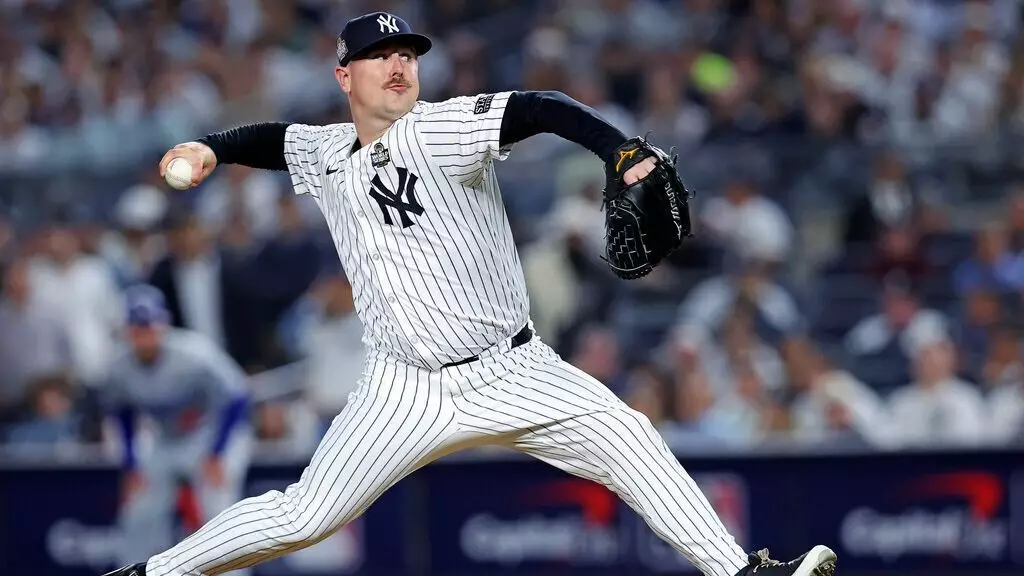In the high-stakes world of Major League Baseball, salary arbitration serves as a critical point for players and teams alike, offering a mechanism for resolving salary disputes between the two parties. Recently, notable players Mark Leiter Jr. of the New York Yankees and Dennis Santana from the Pittsburgh Pirates faced off against their respective teams in arbitration hearings, underscoring the complexities and pressures inherent in this process.
Mark Leiter Jr. had his salary set at $2.05 million for the upcoming season, falling short of his $2.5 million request. This decision was reached by an arbitration panel consisting of Allen Ponak, Robert Herzog, and Scott Buchheit, further highlighting the players’ ongoing struggle for fair compensation. Santana’s outcome was similar; he was awarded $1.4 million instead of the $2.1 million he sought, with Brian Keller, Richard Bloch, and Margaret Brogan making that determination.
These results illustrate that teams have thus far had an upper hand, winning three out of four arbitration cases recently. Alongside Leiter and Santana’s unfavorable decisions, Pittsburgh’s Johan Oviedo was also awarded less than his request, receiving $850,000 instead of the $1.25 million he sought. In contrast, outfielder Mickey Moniak successfully argued for $2 million against the Los Angeles Angels, showing that while some players emerge victorious, the majority tend to find their proposals rejected.
Leiter, who will turn 34 this coming March, offers a unique case study into how player performance can influence arbitration outcomes. His record of 4-5 with a 4.50 ERA in 60 games last season may not have sufficed to justify a higher salary in the eyes of the arbitration panel. Even though he had impactful moments in the postseason, including crucial outings during the World Series, those accolades did little to sway the panel toward his monetary demands. Instead, the decision reflects a broader trend: in the arbitration process, tangible statistical performance often outweighs postseason heroics.
On the flip side, Santana’s case reflects similar challenges. At 28 years old, he had a respectable 3.89 ERA across his relief appearances split between the Yankees and Pirates. However, a career ERA of 4.76 over seven seasons suggests inconsistent performance, likely impacting the arbitration panel’s assessment of his value. His experience across multiple teams did not seem to provide the leverage necessary to secure a salary closer to his request.
The outcomes of these arbitration cases could have lasting implications for other players who are yet to settle their contracts. With five players scheduled for hearings through February 14, including prominent figures such as Brendan Donovan and Nathaniel Lowe, the decisions made in existing cases can set a precedent. As teams continue to win the majority of recent arbitrations, players may need to adjust their expectations regarding salary negotiations in the future.
It’s worth noting the case of Alex Vesia from the Los Angeles Dodgers, who escaped the arbitration process altogether by agreeing to a one-year deal worth $2.3 million. His ability to sidestep arbitration reminds us that not every financial negotiation within Major League Baseball has to reach the level of a hearing. Player-agent negotiations can sometimes yield amicable results that benefit both the athlete and the organization.
Salary arbitration is a critical aspect of a player’s career in Major League Baseball. The recent cases of Leiter and Santana reveal not just individual struggles but echo a larger narrative regarding player compensation in professional sports. For many players, the amount they negotiate for during arbitrations can dictate their financial stability and overall career trajectory. As teams continue to apply strategic insights into their decisions during arbitration processes, players must brace for the complexities that come with trying to convey their worth. Ultimately, these hearings reflect a much larger conversation about player representation, team strategies, and a shifting landscape in professional sports compensation. The journey through such hearings serves to remind athletes of the value of patience, preparation, and the power of performance.

